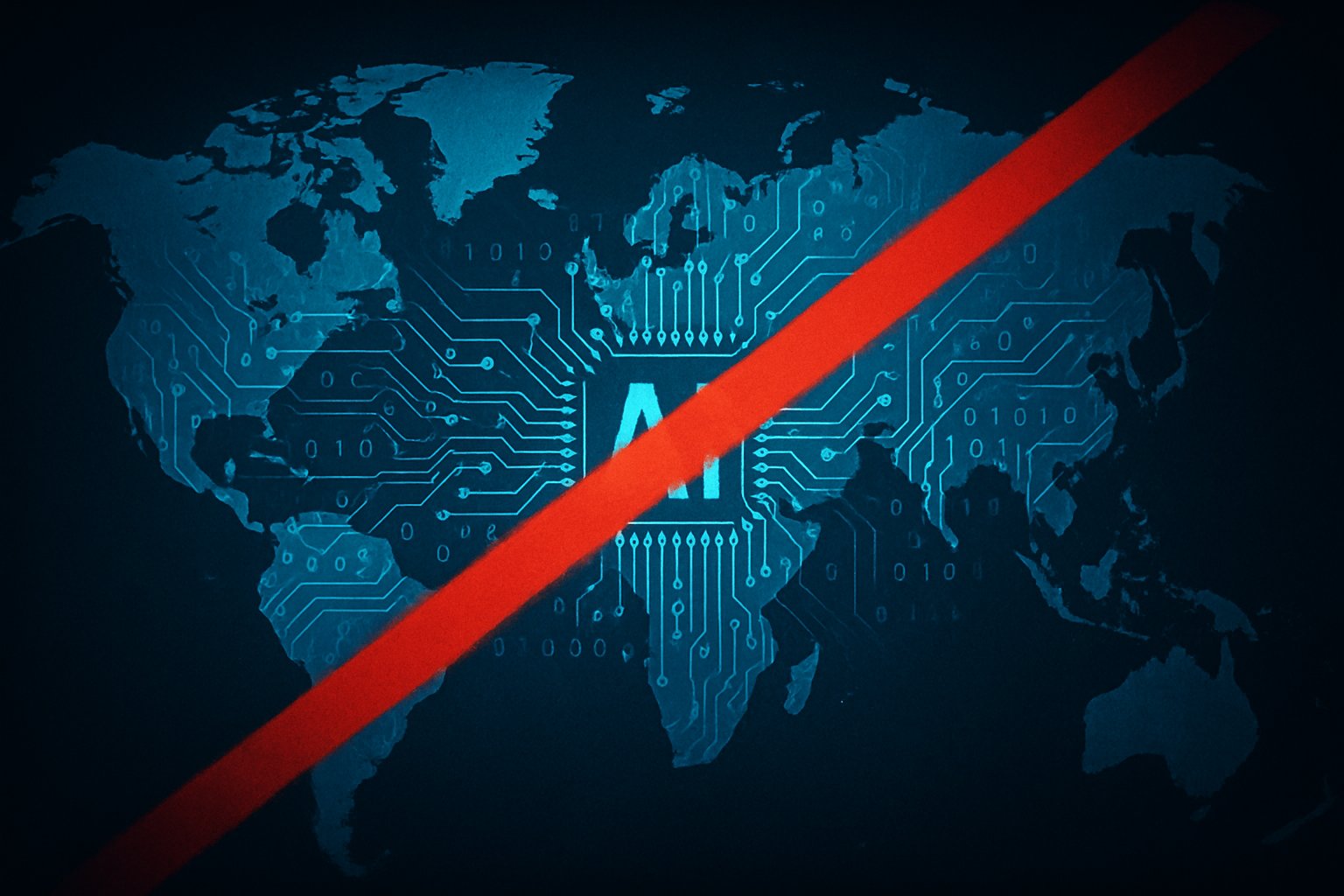
AI CERTS
3 hours ago
UN Red Lines Push Targets 2026 Binding Agreement
Finally, it highlights resources, including a certification that supports evidence-based AI policy. Stakeholders across academia, civil society, and industry view the effort as a pragmatic bridge. Nevertheless, some analysts warn that vague language and verification gaps could stall progress. Therefore, understanding the evolving diplomatic landscape becomes essential for any organization deploying advanced systems. Read on for an in-depth, technical brief that distills fast-moving negotiations into actionable insights.
Campaign Sets Red Lines
The Global Call for AI Red Lines emerged publicly during the much-covered 80th General Assembly launch. Organizers from CeSIA, The Future Society, and UC Berkeley’s CHAI coordinated multiple side events. Maria Ressa’s opening remarks urged delegates to define what AI must never do. Consequently, the campaign lists illustrative bans on nuclear command, bioweapon design, and autonomous killing.

Each proposed harmful use prohibition is framed as verifiable, auditable, and technology-agnostic. Furthermore, drafters avoid exhaustive lists, focusing instead on principles that can adapt with science. They contend that narrow clarity will accelerate an international consensus around the worst threats. In parallel, they request a 2026 binding agreement to anchor those principles in public law.
The launch therefore set a specific timeline and crisp moral narrative. However, turning aspirations into text now requires sustained diplomacy. The next section examines how new UN mechanisms could meet that need.
UN Mechanisms Gain Traction
UN Resolution A/RES/79/325 created an Independent International Scientific Panel on AI. Additionally, the resolution initiated a Global Dialogue on AI Governance scheduled for Geneva in July 2026. Campaign leaders tie these bodies directly to their proposed 2026 binding agreement roadmap. They argue that scientific evidence from the Panel will clarify each harmful use prohibition for negotiators. That momentum builds on the visibility secured during the 80th General Assembly launch.
Meanwhile, diplomats expect the first Panel report by March 2026. Consequently, the Geneva dialogue could crystallize an international consensus before the UNGA plenary session. Observers foresee a ministerial statement that welcomes a 2026 binding agreement draft produced by early movers. Nevertheless, progress depends on clear government commitments to fund verification and compliance tooling.
UN fora thus provide structure, deadlines, and technical legitimacy. However, political pressure still matters. The following section explores which signatories are elevating that pressure.
Key Signatories Add Pressure
Over 300 prominent figures have signed the open letter. Moreover, the roster includes 15 Nobel laureates and legendary AI pioneers Geoffrey Hinton and Yoshua Bengio. Former heads of state Mary Robinson and Juan Manuel Santos joined, adding geopolitical gravitas. In contrast, several leading lab CEOs withheld signatures, signaling unresolved industry concerns.
Campaign materials summarize support into clear statistics.
- 300+ individual signatories across 30 nations.
- 90+ organizations spanning academia, NGOs, and startups.
- 10 former heads of state or ministers.
- 15 Nobel Prize and Turing Award recipients.
These numbers intensify calls for a 2026 binding agreement amid rising public scrutiny. Additionally, media coverage from The Verge, TIME, and CNBC magnifies pressure on undecided delegations.
Signatory clout therefore shifts the cost of inaction upward. However, critics note that influence alone cannot solve technical verification puzzles. We now turn to those puzzles.
Debates Over Verification Challenges
Verification remains the most cited hurdle for negotiators. Consequently, technologists propose independent audits similar to arms-control inspections. However, proving absence of an AI capability is technically demanding. Self-replication detection, dataset tracing, and model watermarking require robust, standardized protocols.
Moreover, states disagree on data-access privileges for inspectors. Some governments fear espionage risks, while others prioritize transparency. The campaign’s draft suggests tiered disclosure based on risk categories. It also references the forthcoming Panel guidance as a compromise path.
Debate continues, yet all sides acknowledge urgency. Therefore, negotiators still target a 2026 binding agreement despite open technical questions. The next section reviews diplomatic tracks sustaining that timeline.
Diplomacy Pathways Move Forward
Campaign organisers promote a coalition-of-the-willing inside the G7 and G20. Furthermore, the EU’s AI Act is cited as proof that tough rules can align innovation and safety. In contrast, the United States has taken a more cautious multilateral stance. Consequently, observers expect European and Asian democracies to draft the first text.
Parallel parliamentary hearings already catalogue harmful use prohibition examples for national white papers. Moreover, policymakers commit to align domestic bills with an eventual 2026 binding agreement. Such government commitments will shape negotiation leverage inside the UN process. Subsequently, diplomats can reference domestic momentum to justify concessions.
Diplomatic choreography therefore blends top-down UN talks with bottom-up national reforms. However, skill gaps among regulators could slow transposition of final rules. Our next section addresses those gaps.
Upskilling Tools For Policymakers
Effective oversight demands specialised technical and legal literacy. Therefore, professionals are turning to targeted training programs. Governments will need certified experts when drafting clauses for the 2026 binding agreement. Practitioners can bolster credentials through the AI Policy Maker™ certification.
The curriculum covers risk taxonomy, audit design, and treaty negotiation basics. Additionally, alumni gain access to a peer network inside regulatory agencies. Such skills translate directly into credible government commitments during multilateral talks. Consequently, capacity building shortens the time required to operationalise any harmful use prohibition.
Upskilling thus supports enforcement realism. However, momentum still hinges on final diplomatic milestones. We close with a forward-looking assessment.
Looking Toward 2026 Milestone
The UN AI Red Lines campaign began with a bold stage at the 80th General Assembly launch. Subsequently, organizers mapped a path toward an enforceable 2026 binding agreement grounded in verifiable safeguards. Moreover, UN mechanisms, influential signatories, and escalating government commitments now steer momentum.
If negotiations stay on schedule, diplomats could finalize the text at Geneva, cementing an international consensus. However, unresolved verification debates and funding gaps remain formidable. Nevertheless, the shared desire to prevent catastrophic harm keeps the 2026 binding agreement within reach.
Professionals should track upcoming Panel publications and engage through training programs. Therefore, seize the moment to acquire certification and shape the next generation of AI policy.



